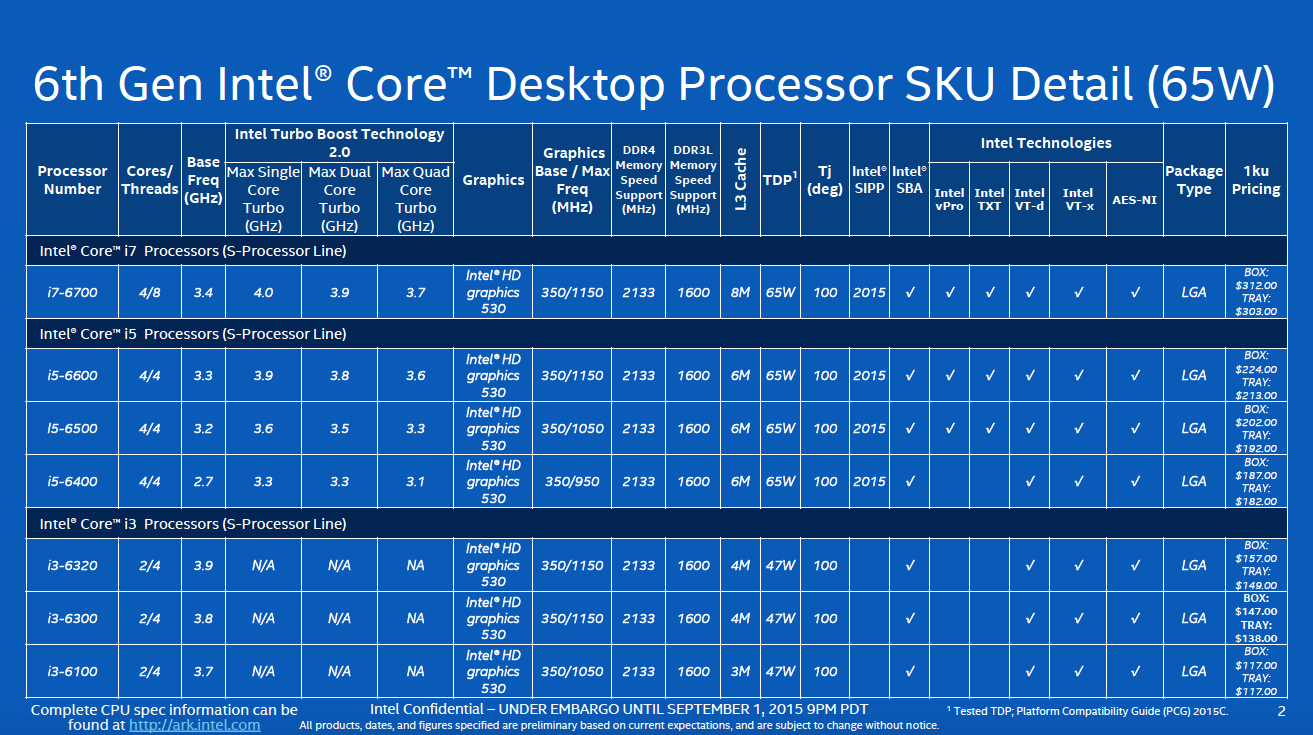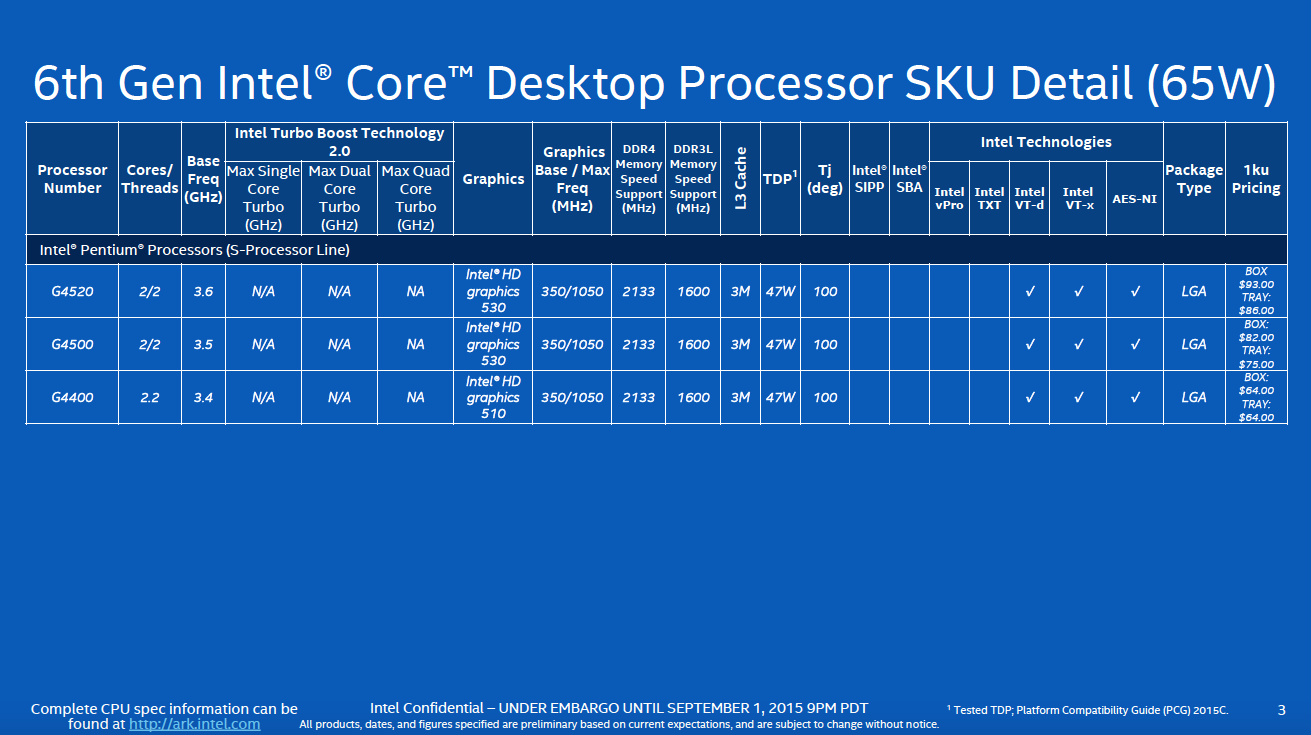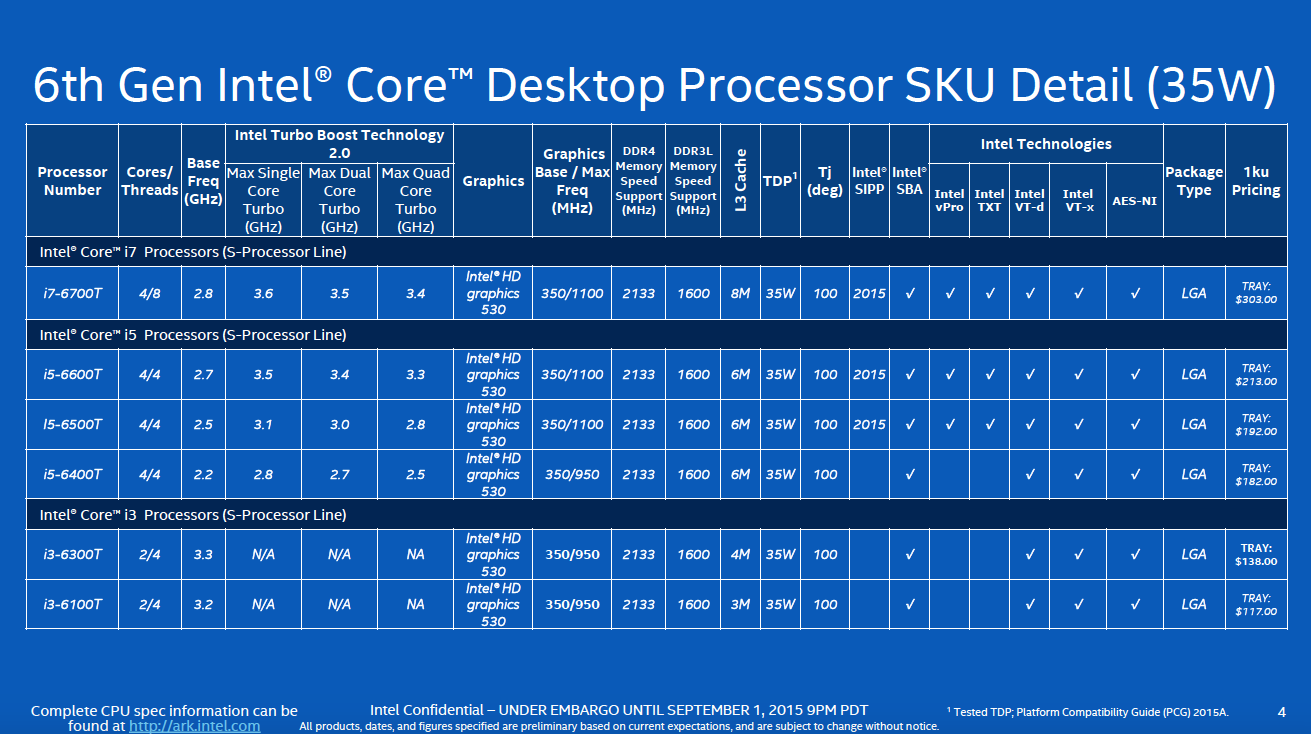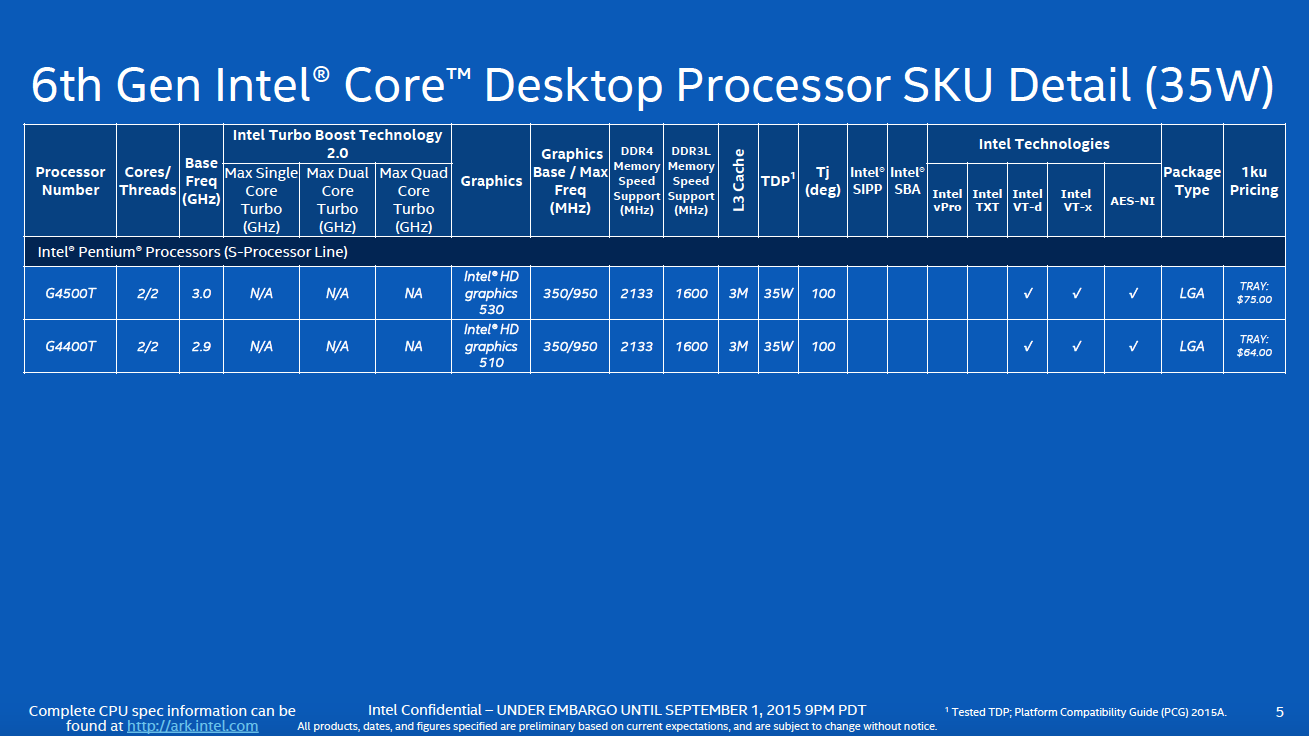
The line-up includes a full line of desktop chips, from flagships that slot just below the K-series hardware to low-power, budget models. It also features mobile quad-cores and dual-cores, including new Core M chips for super-low-power systems. There’s even, for the first time ever, Intel Xeon for mobile.
Intel says the new hardware is up to 2.5x faster in compute performance than previous chips, up to 30x faster in graphics performance, and offers up to three times the battery life. If these numbers sound too good to be true, they are, in a sense. Intel has reached these figures by comparing the new Core i5-6200U to the Core i5-520UM, a dual-core that’s over five years old. This is a tactic Intel has used in the past, and it’s based on the idea that most people upgrade from a PC that’s three to five years old, not one purchased last year.
The company is also continuing to market its chips – the Core line in particular – as a platform, boasting of features like RealSense 3D camera support, TrueKey security, Intel Wireless Display and Thunderbolt. These are, of course, things an older desktop or laptop won’t offer.
Now that I’ve give you a broad tour of the sixth-generation Core line-up, let’s dig into the specifics.
Desktop Processors
Intel’s line-up of desktop chips is broken up into two main categories, based on Thermal Design Power (TDP). The hungrier 65-watt and 47-watt chips consist of mainstream quad-cores and dual-cores in the Pentium, i3, i5 and i7 categories.
There’s only one i7, the i7-6700, which is clocked slightly lower than the i7-6700K, and is also locked, meaning it can’t be overclocked. Below it is three each of the i5, i3 and Pentium line. There are few surprises to be found. As before, the i7 is a quad-core with Hyper-Threading, while the i5s are quads that lack Hyper-Threading. The i3 line is made up of dual-cores that have Hyper-Threading, but lack Turbo Boost, and the Pentiums lack both.
Almost all of the chips offer the same Intel HD 530 graphics solution, which we’ve already tested and found reasonably competent. The sole exception is the Pentium G4400, which is the most affordable CPU in the entire line-up. It has Intel HD 510 graphics.
Below the mainstream desktop hardware is the T-series. These chips are designed for a lower TDP of 35 watts, which is actually less than many of the mobile quads.
The features of T-series are identical to the mainstream hardware; a Core i3 has two cores with Hyper-Threading, but not Turbo Boost, for example. However, because they’re designed to use less power, this line offers lower clock speeds. A i7-6700 has a base clock of 3.4GHz, while an i7-6700T has a base clock of 2.8GHz.
Graphics support again consists almost entirely of Intel HD 530, with the exception of the G4400T, which has HD 510. However, the integrated graphics found on the T-series is sometimes clocked lower than on a similar, mainstream Core desktop chip.
Mainstream Mobile Processors
The Skylake launch includes a full line of flagship mobile hardware targeting a TDP 45 to 35 watts. Most of these CPUs are Core i7 chips, which means the whole feature enchilada of quad-core, Turbo Boost and Hyper-Threading. These are the chips you can expect to find in powerful workstation laptops and
However, Intel is also introducing two Core i5 quad-cores that, like their desktop counterparts, lack Hyper-Threading. This is an interesting departure from past practice – the previous generations of Core restricted quad-core mobile hardware to the i7 line only. This may mean we’ll see quads show up in less expensive systems over the coming months.
Another unusual chip is the Core i3-6100H. This is a dual-core with Hyper-Threading that’s distinct from other i3 models because of its unusually high 2.7GHz clock speed. That is, in fact, the fourth highest base clock of any dual-core in the entire Skylake line-up. I’m not sure what kind of laptops the chip is designed for, but it’ll be interesting to find out.
All of the HQ/H-series chips have Intel HD 530 integrated graphics.
Below the (relatively) power-hungry HQ and H-series hardware is the U-series, which represents the bulk of Intel’s mobile chips by sales volume. While this line includes Pentium, Core i3, i5 and i7 parts, all of them are dual-core, and all of them target a slim 15-watt TDP.
There’s quite a bit a difference to be found in this portion of the line-up. All of the processors have Hyper-Threading, but the Core i3 and i5 lack Turbo Boost. Graphics hardware varies substantially, as well. While the lowly Pentium has HD 510, most of the line-up has HD 520 or, in a few cases, Iris Graphics 540. The chips that have Iris pay for it with a lower clock speed than their peers.
The processor to watch here is the Core i5-6200U, which is also the chip that Intel used as the basis for its performance claims. This mid-tier has a base clock of 2.3GHz and a maximum Turbo Boost of 2.8GHz, as well as Intel HD 520 graphics. It’s an important chip because the mid-range Core i5 is usually the one that becomes most popular with system builders. In the last generation, it was the Core i5-5200U, before that it was the Core i5-4200U, and so on.
Graphics-heavy mobile processors
The HQ, H and U-series processors are joined by a niche of four U-series chips that target a 28-watt TDP. These are essentially super-charged dual-cores. That extra power goes towards not only strong base clock speeds, but also Intel Iris 550 graphics, the most powerful version of the company’s IGP available for mobile.
While these chips usually don’t show up in a great number of systems, Apple has used their previous-generation brethren in the 13-inch MacBook Pro to give it a performance edge over Windows notebooks. It seems that traditional may continue with Skylake.
Core M
When manufacturers need to design an extremely thin system they turn towards Core M, a brand of ultra-mobile hardware that was first introduced in late 2013. These chips target a thermal design power of between 4.5 and 6 watts, making them by far the most conservative of this bunch.
Predictably, that means performance is slim. All the sixth-generation Core M chips have two cores with Hyper-Threading, and while Turbo Boost clocks can reach very high speeds, even a top-of-the-line Core M 6Y75 has a base clock of only 1.2GHz. These chips also use Intel HD 515 graphics.
You’ll only find these processors in the thinnest, lightest systems, such as the Apple MacBook and Lenovo LaVie Z.
Xeon for mobile
Last, but not least, we have the two Xeon processors, the first ever for mobile. Predictably, they’re not pushovers. Both are quad-cores with Hyper-Threading and Turbo Boost. The low-end model has a base clock of 2.8GHz, and its big brother has a base clock of 2.9GHz, with Turbo Boost as high as 3.8GHz. These figures exceed all but the fastest 6th-gen mobile quad, the i7-6920HQ, which ties the top shelf Xeon. The Xeons also come with a special version of Intel HD graphics called P530.
- 1. Intel IFA 2015 – U-series 3
- 2. Intel IFA 2015 – Xeon
- 3. Intel IFA 2015 – Core m
While powerful, you shouldn’t expect these chips to show up in consumer hardware. They’ll be reserved for extremely high-end mobile workstations built for enterprise.
A Skylake for everyone
This is an extremely large product launch. Intel has staggered its announcements in the past, often leading with either desktop or mobile only. With the fifth generation it led with Core M, and the few desktop chips that appeared did not arrive until more than half a year after that announcement.
Of course, it’s worth wondering how many of these chips will show up in production hardware in time for the holiday season. All the major PC manufacturers at IFA seem to be embracing the sixth generation, and availability dates seem to be landing in October and November. However, the launch of the Skylake K-Series for desktop burned some enthusiasts; though the reviews have been up for over a month, availability of the Core i5-6600K and Core i7-6600K remains iffy.
In any case, consumers looking to buy a computer sometime in the next two years should become familiar with this line-up. It will likely remain relevant for a very long time, as the successor to Skylake is said to be delayed until 2017 – or beyond.












